Solar cooking safety matters for your health because it guarantees you're consuming properly cooked food while using this eco-friendly method. You'll need to monitor temperatures carefully to prevent foodborne illnesses and avoid burns from hot surfaces. Proper equipment selection, food handling practices, and maintenance are essential for safe operation. Weather considerations and emergency preparedness also play a role in keeping you safe while solar cooking. By following safety guidelines, you'll protect yourself and your loved ones from potential hazards while enjoying delicious, sustainably prepared meals. Understanding these key aspects will help you make the most of your solar cooking experience.
Understanding Solar Cooking Basics
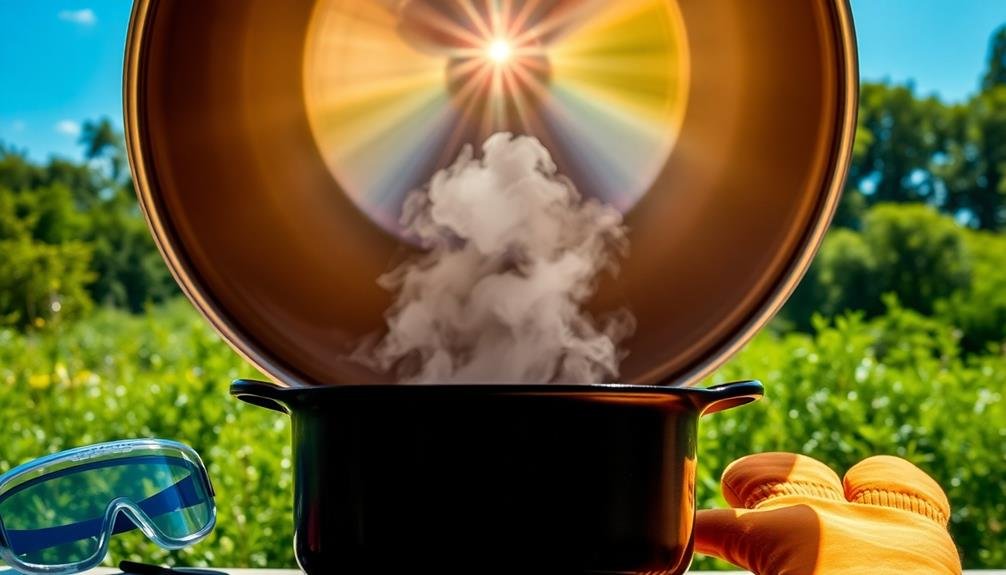
Nearly all solar cooking methods rely on the same basic principles. You're harnessing the sun's energy to heat food, using reflective surfaces to concentrate sunlight onto a cooking vessel.
The most common types of solar cookers are box cookers, panel cookers, and parabolic cookers. Each design has its own advantages and limitations, but they all work by trapping heat and cooking food slowly.
When you're solar cooking, you'll need to take into account factors like the time of day, weather conditions, and the type of food you're preparing. You'll typically place your food in a dark, thin-walled pot with a tight-fitting lid to maximize heat absorption.
It's essential to understand that solar cooking temperatures can vary widely, from around 200°F to 400°F, depending on the cooker design and conditions.
You'll need to plan ahead, as solar cooking often takes longer than conventional methods. However, it's a sustainable, eco-friendly way to prepare meals without fuel costs.
Proper Equipment Selection
Safety in solar cooking begins with choosing the right equipment. You'll want to invest in a high-quality solar cooker designed specifically for food preparation. Look for models with stable bases and secure lids to prevent accidents.
Opt for cookers made from food-grade materials that can withstand high temperatures without leaching harmful chemicals into your meals. Consider the size of your solar cooker based on your cooking needs. Larger cookers can accommodate more food but may be less portable.
Confirm your chosen model has adequate insulation to maintain consistent cooking temperatures and prevent burns.
Don't forget essential accessories like heat-resistant gloves, long-handled utensils, and sturdy pot holders. These tools will protect you from accidental burns when handling hot cookware.
Choose dark-colored, thin-walled pots with tight-fitting lids for ideal heat absorption and retention. A reliable thermometer is vital for monitoring food temperatures and guaranteeing thorough cooking.
Invest in a good-quality solar thermometer designed to withstand outdoor conditions. Finally, select appropriate food storage containers to keep your ingredients fresh and prevent contamination during the cooking process.
Safe Food Handling Practices
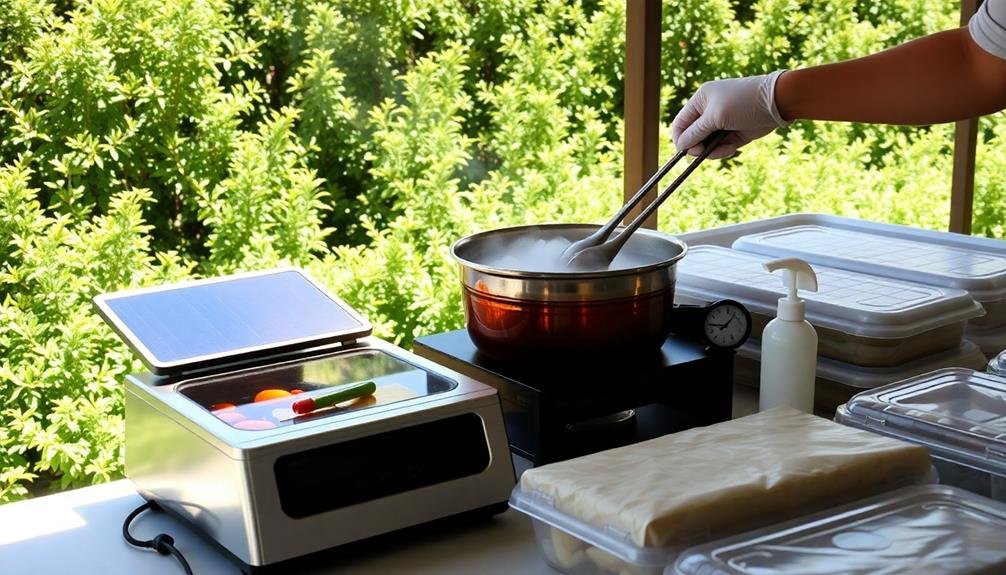
When solar cooking, you'll need to pay close attention to food safety practices.
Always use a thermometer to monitor your food's internal temperature, ensuring it reaches safe levels to kill harmful bacteria.
Keep your cooking utensils clean and sanitized to prevent cross-contamination and maintain a hygienic cooking environment.
Proper Temperature Monitoring
Throughout the solar cooking process, proper temperature monitoring is essential for ensuring food safety. You'll need to use a food thermometer to check the internal temperature of your dishes, as visual cues alone aren't reliable. Different foods require different minimum temperatures to kill harmful bacteria, so familiarize yourself with these guidelines.
For meats, poultry, and fish, insert the thermometer into the thickest part, avoiding bone or fat. In casseroles or egg dishes, check multiple spots. Remember to clean your thermometer between uses to prevent cross-contamination.
Solar cookers can reach high temperatures, but they may fluctuate based on weather conditions. Keep a close eye on your cooker's temperature gauge and adjust the reflectors as needed to maintain consistent heat. If the temperature drops below safe levels, consider alternative cooking methods to finish your meal.
Proper temperature monitoring isn't just about safety; it's about:
- Protecting your loved ones from foodborne illnesses
- Ensuring delicious, perfectly cooked meals every time
- Gaining confidence in your solar cooking skills
- Contributing to a sustainable lifestyle without compromising health
Clean Cooking Utensils
Just as monitoring temperatures safeguards your food, maintaining clean cooking utensils is a cornerstone of safe solar cooking practices.
When using a solar cooker, you're often working with lower temperatures, which means bacteria have a greater chance of surviving if your utensils aren't properly cleaned.
Always wash your cooking tools, pots, and serving dishes with hot, soapy water before and after each use.
Don't forget to sanitize cutting boards, especially after handling raw meats. Rinse everything thoroughly to remove any soap residue that could affect the taste of your food.
Pay extra attention to utensils used for stirring or checking food during the cooking process.
These can easily become contaminated if not cleaned between uses. Keep separate utensils for raw and cooked foods to prevent cross-contamination.
Store your clean utensils in a dry, covered area to protect them from dust and insects.
Before using them, give them a quick rinse with clean water.
Temperature Control Techniques
To guarantee safe solar cooking, you'll need to master temperature control techniques.
Proper food temperature monitoring is essential; use a reliable thermometer to check that your dishes reach safe internal temperatures.
You must also avoid temperature danger zones by keeping hot foods hot (above 140°F) and cold foods cold (below 40°F), minimizing the time food spends at temperatures conducive to bacterial growth.
Proper Food Temperature Monitoring
While solar cooking offers a sustainable way to prepare meals, ensuring proper food temperature is essential for both safety and taste. You'll need to monitor your food's temperature throughout the cooking process to prevent undercooking or overheating. Use a food thermometer to check internal temperatures, especially for meats and poultry.
Don't rely solely on visual cues, as solar ovens can cook food differently than conventional methods. Keep a close eye on your solar cooker's temperature gauge, if it has one. If not, you can use an oven thermometer placed inside the cooking chamber.
Adjust the cooker's position or use reflectors to maintain the desired temperature range. Remember that factors like cloud cover and wind can affect cooking times and temperatures.
To emphasize the importance of proper food temperature monitoring, consider these emotional appeals:
- Protect your loved ones from foodborne illnesses
- Savor perfectly cooked meals every time
- Gain confidence in your solar cooking skills
- Contribute to a healthier, more sustainable future
Avoiding Temperature Danger Zones
When it comes to solar cooking, understanding and avoiding temperature danger zones is essential for food safety. The danger zone lies between 40°F and 140°F (4°C to 60°C), where bacteria can multiply rapidly. To prevent foodborne illnesses, you'll need to keep cold foods below 40°F and hot foods above 140°F.
For cold foods, use insulated containers or coolers with ice packs to maintain safe temperatures. If you're preparing ingredients for solar cooking, keep them refrigerated until you're ready to use them.
Once you start cooking, aim to bring the food temperature above 140°F as quickly as possible. During the solar cooking process, monitor the temperature regularly using a food thermometer. If the temperature drops below 140°F, you'll need to boost it using alternative heat sources or by adjusting the solar cooker's position.
Don't let food sit in the danger zone for more than two hours (or one hour if the outdoor temperature is above 90°F). After cooking, serve hot foods immediately or keep them above 140°F using insulated containers.
If you're not serving the food right away, cool it rapidly and refrigerate within two hours to prevent bacterial growth.
Avoiding Burns and Injuries
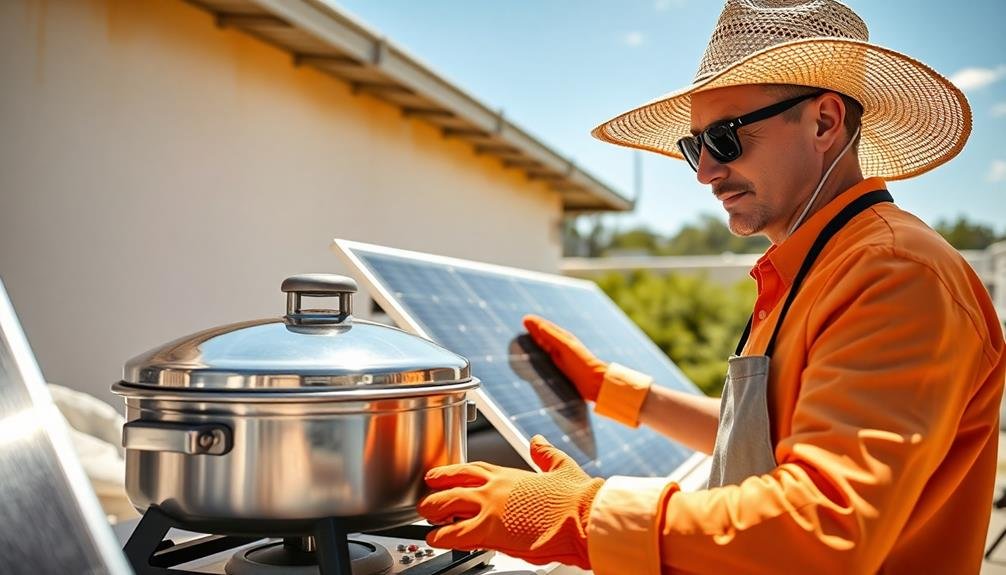
Safety should be your top priority when using a solar cooker. While these devices are generally safe, they can still cause burns and injuries if not handled properly.
Always use oven mitts or heat-resistant gloves when touching any part of the solar cooker, especially the reflective surfaces and cooking vessel. Remember that even on cloudy days, your solar cooker can reach high temperatures.
Be cautious when opening the cooker or removing the lid, as steam can escape suddenly and cause scalding. Keep children and pets away from the cooking area to prevent accidental burns or tipping of the cooker.
When adjusting the cooker's position, use the handles provided and avoid touching hot surfaces.
To further guarantee your safety, follow these emotional reminders:
- Your health is irreplaceable – protect it at all costs.
- A moment of caution prevents a lifetime of regret.
- Your loved ones depend on you to stay safe.
- Cooking should bring joy, not pain – prioritize safety.
Preventing Foodborne Illnesses
Beyond physical safety, proper food handling is key to enjoying your solar-cooked meals without risking illness. Solar cooking requires extra vigilance to prevent foodborne pathogens from thriving. Always use clean utensils and containers, and wash your hands thoroughly before handling food. Avoid cross-contamination by keeping raw and cooked foods separate.
Monitor your food's temperature closely. Solar cookers can heat unevenly, so stir dishes frequently to guarantee uniform cooking. Use a food thermometer to verify that meats reach safe internal temperatures: 165°F (74°C) for poultry, 160°F (71°C) for ground meats, and 145°F (63°C) for whole cuts.
Don't let food linger in the "danger zone" between 40°F (4°C) and 140°F (60°C) for more than two hours. If you're cooking on a hot day, reduce this time to one hour. Cool leftovers quickly and refrigerate them promptly. When reheating, verify the food reaches 165°F (74°C) throughout.
Be cautious with high-risk foods like dairy, eggs, and seafood. Consider using pasteurized eggs for dishes that won't be fully cooked.
Cleaning and Maintenance Tips
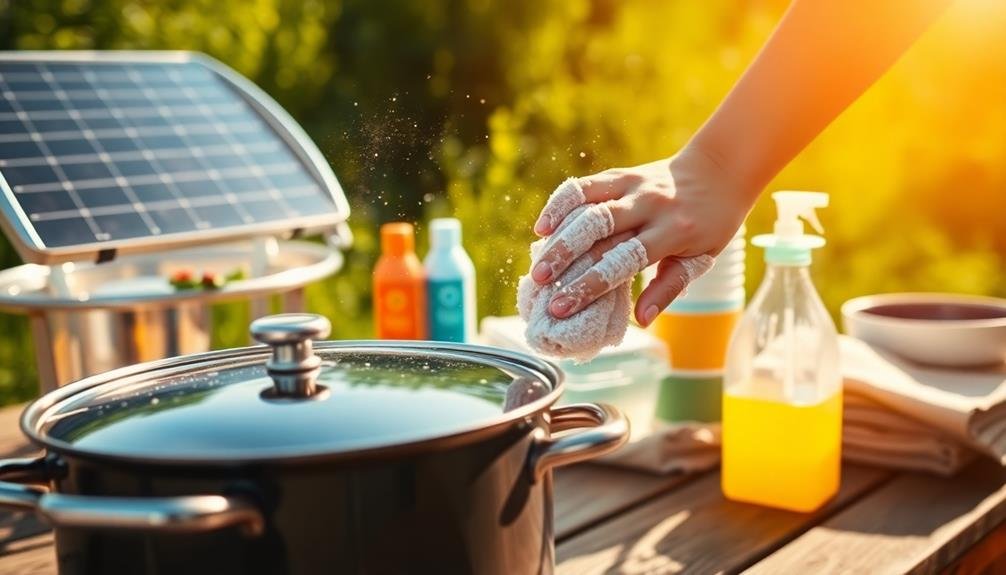
Three key aspects of solar cooker maintenance guarantee its longevity and peak performance: regular cleaning, proper storage, and timely repairs.
After each use, wipe down your solar cooker with a damp cloth to remove food residue and prevent buildup. For tougher stains, use a mild soap solution, but avoid harsh chemicals that could damage the reflective surfaces.
Store your solar cooker in a dry, cool place when not in use. Protect it from dust, moisture, and extreme temperatures to prevent warping or degradation of materials.
Periodically inspect your cooker for signs of wear, such as cracks, loose parts, or faded reflective surfaces. Address any issues promptly to maintain maximum cooking efficiency.
To keep your solar cooker in top shape, follow these emotional drivers:
- Pride: Maintain a clean, well-functioning cooker that you're proud to use and show off.
- Satisfaction: Enjoy consistent, high-quality meals from a well-maintained appliance.
- Security: Guarantee your cooker's safety and reliability through regular upkeep.
- Environmental responsibility: Extend your cooker's lifespan, reducing waste and supporting sustainable cooking practices.
Weather Considerations for Safety
While solar cooking offers numerous benefits, it's vital to take into account weather conditions for safe and effective use. Sunny days are ideal, but you'll need to be cautious of sudden changes in weather. Strong winds can destabilize your solar cooker, potentially causing spills or accidents. Secure your cooker and use windbreaks if necessary.
Clouds can greatly reduce cooking efficiency, so you'll want to monitor the forecast and plan accordingly. Unexpected rain poses risks of electrical hazards if your solar cooker incorporates any electronic components. It's important to protect your cooker from moisture and discontinue use if rain begins.
Extreme heat can cause materials to warp or degrade, affecting your cooker's performance and safety. Store it in a shaded area when not in use.
In colder climates, you may need to adjust cooking times or use additional insulation to maintain proper temperatures.
Always keep an eye on local weather alerts and be prepared to quickly and safely terminate your solar cooking session if conditions become unfavorable. By staying aware of weather considerations, you'll guarantee a safer and more enjoyable solar cooking experience.
Emergency Preparedness Guidelines
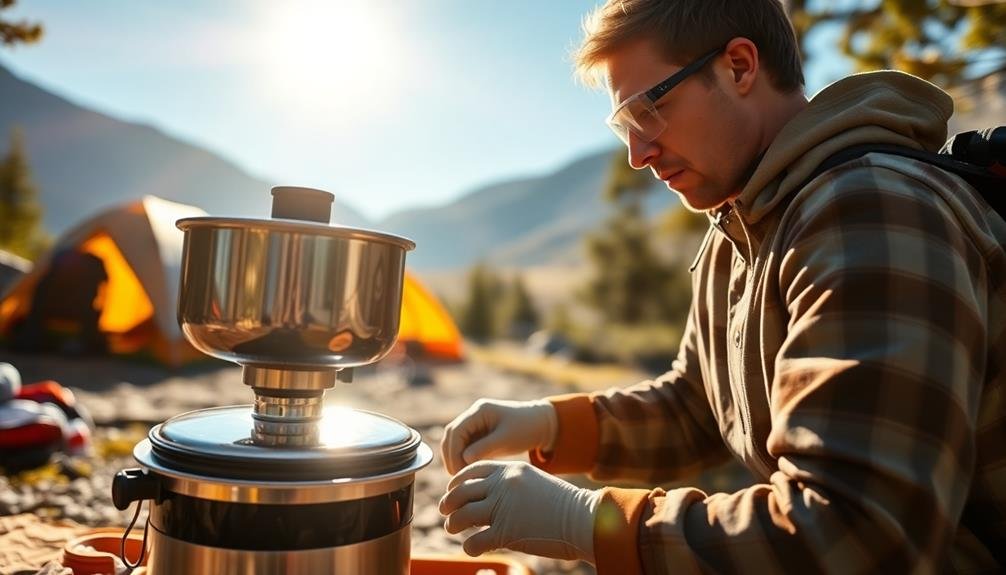
Being prepared for emergencies is a key aspect of solar cooking safety. When using a solar cooker, you should always have a backup plan in case of sudden weather changes or equipment failures.
Keep a conventional cooking method nearby, such as a portable gas stove or an indoor kitchen. It's also essential to have proper safety equipment on hand, including heat-resistant gloves, sunglasses, and a fire extinguisher.
Develop an emergency action plan that includes steps for quickly and safely shutting down your solar cooker. Familiarize yourself with potential hazards specific to your cooking location and equipment.
Remember to keep a well-stocked first aid kit nearby and know how to use it.
To guarantee you're fully prepared for any situation, consider these emotional reminders:
- Your loved ones depend on your safe return from outdoor cooking adventures.
- Proper preparation can mean the difference between a minor incident and a major disaster.
- The peace of mind that comes with being well-prepared is invaluable.
- Your actions in an emergency can inspire others to prioritize safety.
Frequently Asked Questions
Can Solar Cooking Affect the Nutritional Value of Food?
Solar cooking can affect your food's nutritional value. You'll retain more vitamins and minerals compared to traditional cooking methods. It's a gentle process that preserves nutrients, but you should still be mindful of cooking times and temperatures.
Are There Any Foods That Should Never Be Cooked in a Solar Cooker?
You shouldn't cook raw or undercooked meats in a solar cooker due to food safety concerns. Also, avoid cooking foods that require precise temperature control or quick cooking times, as solar cookers can be slow and inconsistent.
How Does Altitude Impact Solar Cooking Efficiency and Safety?
At higher altitudes, you'll find solar cooking is more efficient due to less atmospheric interference. However, you'll need to adjust cooking times and temperatures. Remember, water boils at lower temperatures, so be cautious with food safety.
Can Solar Cookers Be Used Indoors With Sunlight Through Windows?
You shouldn't use solar cookers indoors through windows. They're designed for outdoor use and require direct sunlight. Windows filter UV rays and reduce efficiency. Plus, indoor use can create safety hazards and potentially damage your home.
Are There Any Special Considerations for Solar Cooking in Humid Climates?
In humid climates, you'll need to watch for moisture buildup in your solar cooker. Keep it dry when not in use, guarantee proper ventilation, and consider using a dehumidifier nearby. You might also need to adjust cooking times slightly.
In Summary
You've learned why solar cooking safety is essential for your health. By understanding the basics, choosing proper equipment, and following safe practices, you'll minimize risks. Remember to handle food safely, control temperatures, and avoid burns. Don't forget to clean and maintain your solar cooker. Stay prepared for weather changes and emergencies. With these precautions, you'll enjoy the benefits of solar cooking while keeping yourself and your loved ones healthy and safe.
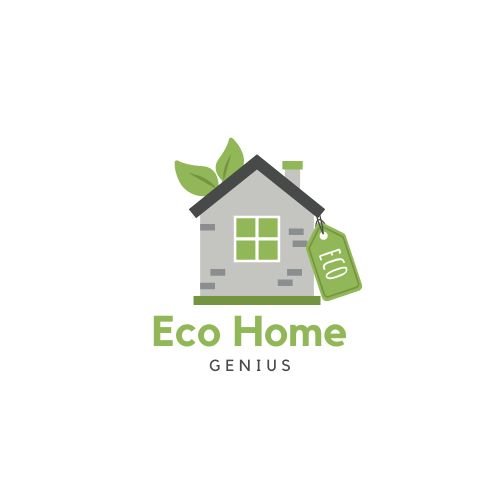
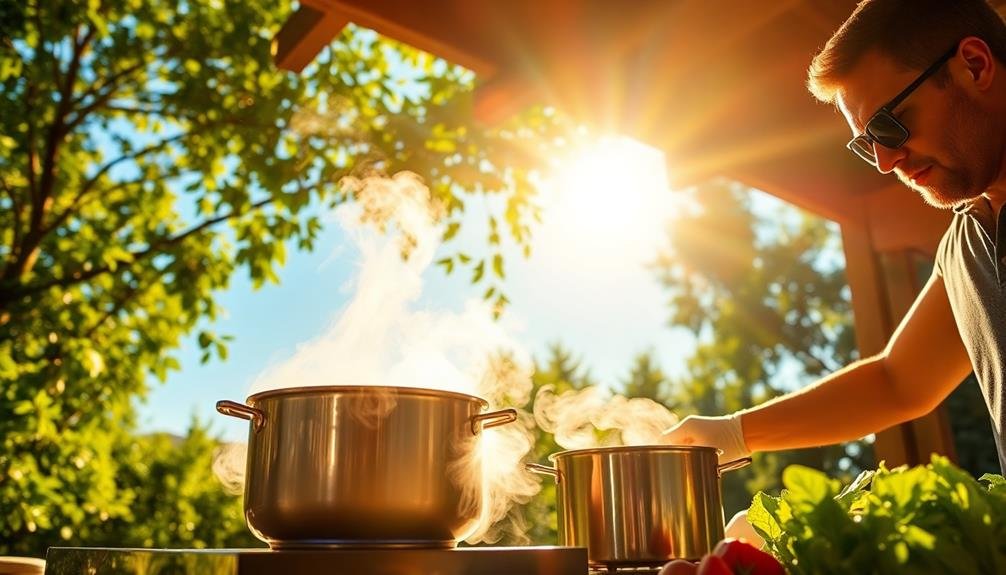
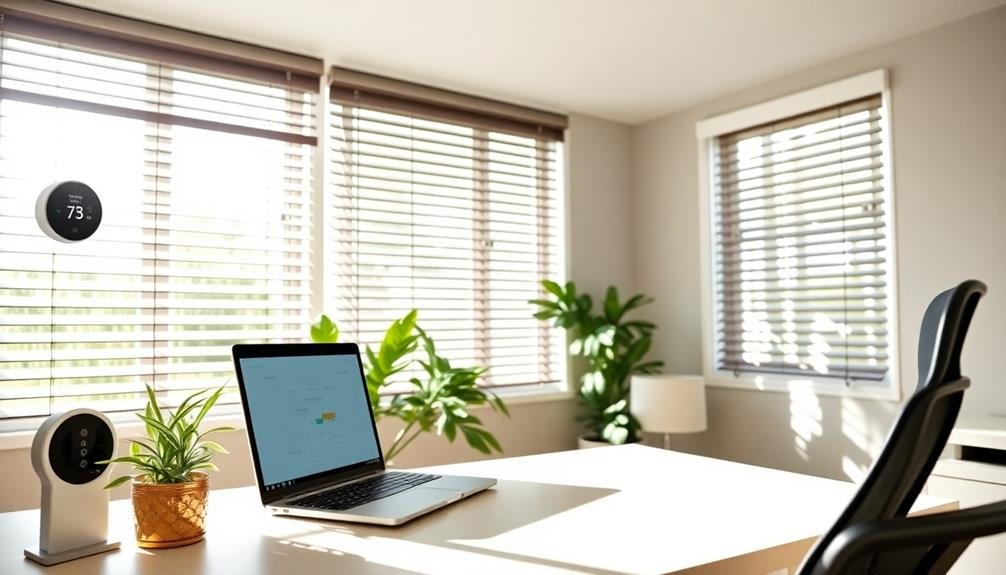
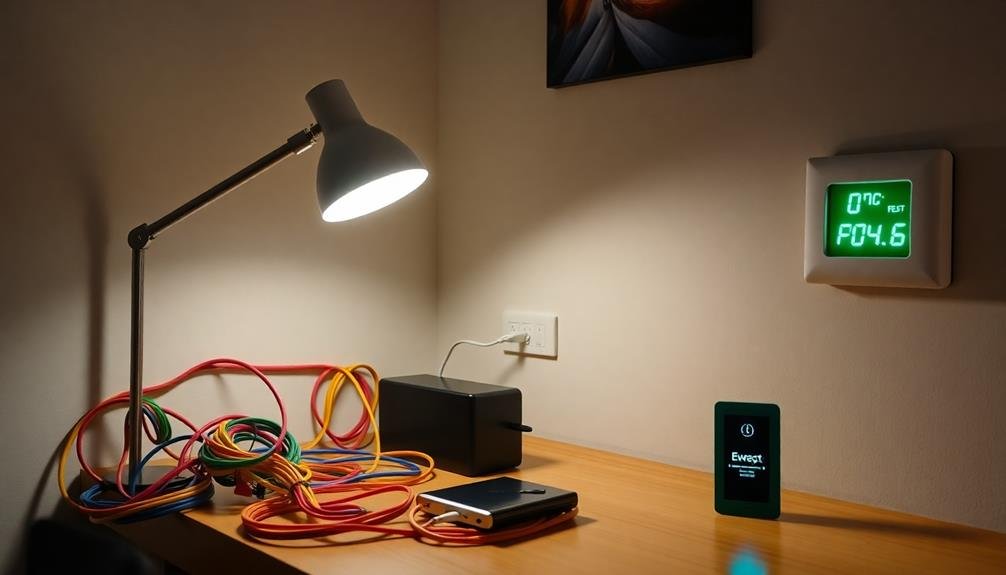
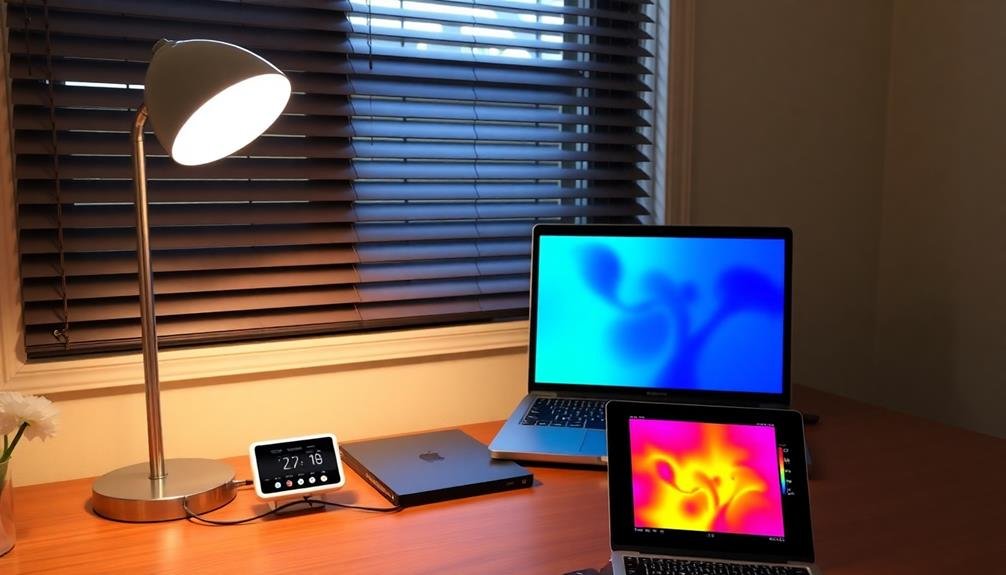
Leave a Reply